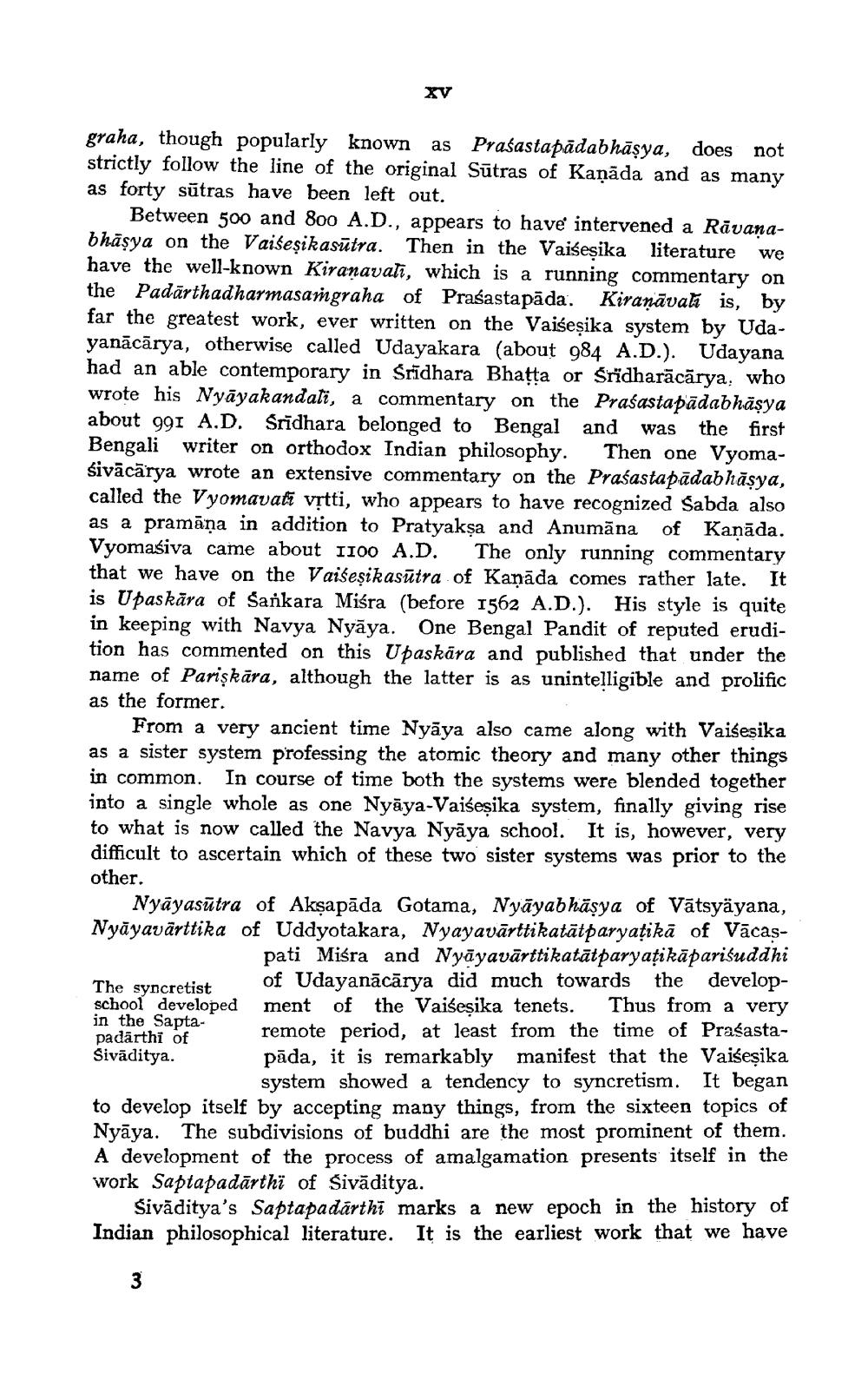________________
XV
graha, though popularly known as Prasastapādabhāşya, does not strictly follow the line of the original Sūtras of Kanāda and as many as forty sūtras have been left out.
Between 500 and 800 A.D., appears to have intervened a Rāvanabhāsya on the Vaibesikasūtra. Then in the Vaibesika literature we have the well-known Kiranavali, which is a running commentary on the Padārthadharmasangraha of Prasastapäda. Kiranāvată is, by far the greatest work, ever written on the Vaiseșika system by Udayanācārya, otherwise called Udayakara (about 984 A.D.). Udayana had an able contemporary in Sridhara Bhatta or Sridharācārya, who wrote his Nyāyakandali, a commentary on the Prasastapādabhäşya about 991 A.D. Sridhara belonged to Bengal and was the first Bengali writer on orthodox Indian philosophy. Then one Vyomaśivācārya wrote an extensive commentary on the Prasastapādabhāşya, called the Vyomavatı vịtti, who appears to have recognized Sabda also as a pramāņa in addition to Pratyaksa and Anumāna of Kanāda. Vyomasiva came about 1100 A.D. The only running commentary that we have on the Vaiseșikasūtra of Kanāda comes rather late. It is Upaskāra of Sankara Miśra (before 1562 A.D.). His style is quite in keeping with Navya Nyāya. One Bengal Pandit of reputed erudition has commented on this Upaskāra and published that under the name of Parişkāra, although the latter is as unintelligible and prolific as the former.
From a very ancient time Nyāya also came along with Vaisesika as a sister system professing the atomic theory and many other things in common. In course of time both the systems were blended together into a single whole as one Nyāya-Vaiseșika system, finally giving rise to what is now called the Navya Nyāya school. It is, however, very difficult to ascertain which of these two sister systems was prior to the other.
Nyāyasūtra of Akşapāda Gotama, Nyāyabhāşya of Vātsyäyana, Nyāyavärttika of Uddyotakara, Nyayavārtti katātparyaţikā of Vācas
pati Miśra and Nyāyavārttikatātparyaţikāparisuddhi The syncretist
of Udayanācārya did much towards the developschool developed ment of the Vaiseșika tenets. Thus from a very in the Saptapadārthi of
remote period, at least from the time of PrasastaSivāditya.
pāda, it is remarkably manifest that the Vaiseșika
system showed a tendency to syncretism. It began to develop itself by accepting many things, from the sixteen topics of Nyāya. The subdivisions of buddhi are the most prominent of them. A development of the process of amalgamation presents itself in the work Saptapadārthi of Sivāditya.
Sivāditya's Saptapadārthi marks a new epoch in the history of Indian philosophical literature. It is the earliest work that we have




